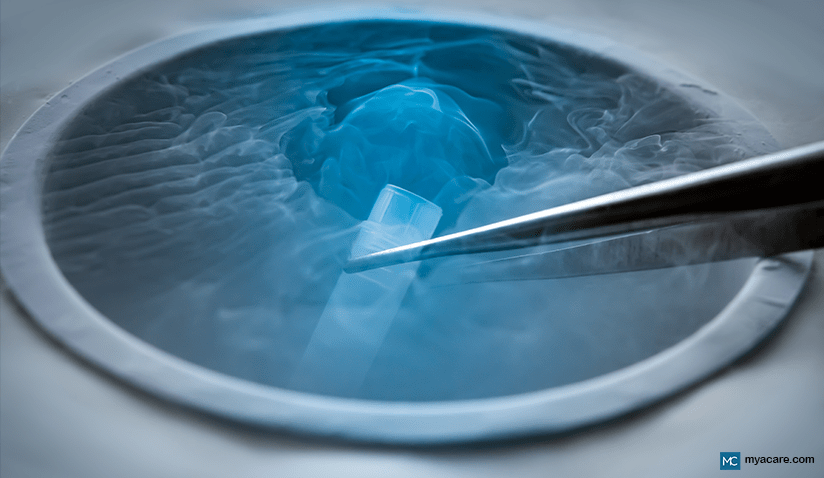Egg and Ovarian Cortex Freezing
Why would I choose to freeze my ovarian tissue or my child’s?
Women and girls facing certain medical treatment such as cancer surgery, radiation or chemotherapy, may experience impaired fertility or hormone production as a result. Individuals undergoing gender affirmation surgery may also wish to preserve ovarian tissue.
Ovarian tissue cryopreservation can remove the egg-producing portion of the ovary, called the ovarian cortex, before a patient’s treatment, freeze it, and store it. The tissue can be transplanted years later to make pregnancy possible.
In addition to increasing the possibility of pregnancy, ovarian tissue preservation also has the added benefit of hormone production. Damaged ovaries often cannot make important hormones such as estrogen or progesterone, requiring the woman to seek hormone therapy. Previously frozen, healthy ovarian tissue can be reimplanted after treatment to restore natural hormone production.
Ovarian Cryopreservation for Fertility Preservation: What Happens
When the patient is asleep under anesthesia, the surgeon makes a small incision (cut) in the abdomen and inserts a narrow tube called a laparoscope. Next, the surgeon removes tissue from the surface of one ovary, which contains immature eggs. Often, one ovary is removed to harvest an adequate amount of tissue. The tissue is carefully divided into small pieces, and flash frozen. Frozen ovarian tissue can be kept for several years in specially equipped storage facilities where samples are carefully monitored and preserved.
Once medical treatment is complete and the person who had ovarian tissue removed and frozen is ready to have ovaries restored, doctors can thaw the tissue and return it to the body. This procedure also uses a laparoscope. The surgeon may form a pocket in the peritoneum, a membrane that surrounds the organs in the abdomen, and deposit the tissue into the pelvis close to the remaining ovarian tissue.
After the thawed tissue is replaced, ovarian activity should begin or resume after a few months. At this point, pregnancy attempts can start under the guidance of a fertility specialist.
Pregnancy After Frozen Ovarian Tissue Transplantation
If the transplantation is successful and the patient is producing eggs, pregnancy can occur naturally or through in vitro fertilization (IVF). The procedure results in successful pregnancy in about one-third of patients, according to one study.
Risks of Freezing Ovarian Tissue
Harvesting the tissue and transplanting it are both surgical procedures that are performed with anesthesia, which involves risks. For patients with a blood cancer, such as leukemia, there is a risk of reintroducing cancerous cells into the body when the thawed ovarian tissue is reimplanted.














